Users Concerned About Data Security, Companies Slow to Respond


New devices, apps and websites have increased the demand and use of data. We can now receive the results of a blood test, hear about a friend’s breakup, check the electricity usage of our home and watch our child play in their preschool classroom from our devices. Although online data can provide great benefit, it presents numerous security issues as well.
Do you have mobile apps that collect data on you without your consent? Do you know how companies use your disclosed data and, more importantly, is their usage benefiting you? Are there data breaches involving your information that you might not be aware of? Is your personal information available for use by other people without your permission? Unfortunately, many companies are not rising to the data security challenge, and consumers are noticing.
A recent HyTrust poll found that 73 percent of respondents don't believe their personal and financial information shared with companies is safe. This clearly demonstrates that companies are not fulfilling consumer demand for data security, and customers may be right to worry:
The Fourth Annual Benchmark Study on Patient Privacy and Data Security by Ponemon Institute found security threats to patient hospital records. The threats include: criminal attacks, employee negligence, unsecured mobile devices (laptops, smartphones and tablets), and third parties. A November 2012 study by Edelman found that companies are not prepared to meet consumer and regulator expectations around data security and privacy. It cites lack of resources, emphasis and transparency as the root causes of this divide, with an organization's financial and reputational risk on the line.
Data security and online privacy are changing elements in the business environment, and most companies are not responding quickly enough to this change -- as seen from the Heartbleed debacle. Consumer demand is left unmet, creating an opportunity for firms that excel in this area.
“With the growing level of consumer, media and regulatory attention currently focused on privacy, businesses simply cannot afford to risk the reputational and financial damage that may result from a lack of attention to this business critical need. Rather, we see an opportunity for businesses to grow confidence and trust in their brands through thoughtful privacy and data management,” said Ben Boyd, global chair of corporate practice at Edelman.
Data security and the cloud
Data security has been an issue in the adoption of cloud computing, because users have no knowledge of where their information is stored and exactly who has access to it. The cloud also raises issues of accountability if there is in fact a data breach. Forbes recently posed the question: Will security kill the cloud?
Despite being a very complex issue, consumers will need to rise to the occasion to protect their personal information. Users need to ensure that sharing data is secure, consensual and provides value. “Most smartphones have all kinds of filters where you can turn things on and off, both on the device and the applications themselves,” said Sheila Jordan, chief information officer for Symantec. “Just think when you turn that device on, what information do you want them to know about you and not know about you. Make sure you think through that and protect your identity. It is the responsibility of the consumers to protect their own personal privacy.”
It seems that concern for personal privacy varies by generation. "Millennials are a bit more free with their information and I don’t know that they understand the implications of that," says Jordan. "I don’t think that generation is asking all the appropriate questions. Where does this information end up, and does it help them or aid them? They are thinking more about the social aspects and benefits of it."
Older generations are on the other end of the spectrum, according to Jordan, and may not receive the benefits of appropriate sharing of information. "I think the older generations are more skeptical of the social aspects of it. I think there are some generational biases going on, and I think we need to educate them, because I do think there are some benefits ... as long as there is value to the consumer."
Data security and privacy is only going to become more complex in the coming years, with the merging of mobile devices, the cloud, increased demand for data, and the convergence of personal and professional identities. As our online presences becomes more vast and complex, so do the privacy and security issues associated with them. These issues are at the heart of corporate social responsibility, as it puts protecting people (and their data) as a primary concern.
Image credit: Flickr.com for jfcherry (upper image) and Intel Free Press (lower image)
Are City Bicycle-Sharing Programs Doomed?
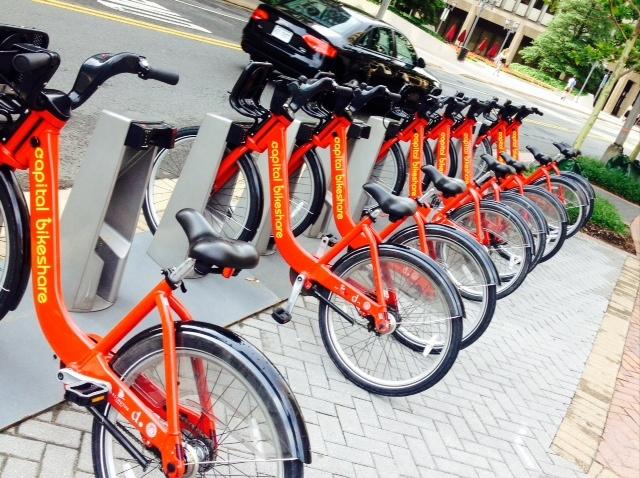

A year has passed since Zagster launched a bike-sharing program for Rock Ventures’ portfolio of properties and companies in downtown Detroit. Considering all the challenges the Motor City has with crime, not to mention the harsh Michigan winters, success was hardly guaranteed. But the program is still humming along, and now GM is partnering with Zagster for a similar program at General Motor’s 330-acre technical center in nearby Warren.
Such success is behind the growth of Zagster as it focuses on bicycle-sharing projects at universities and corporate campuses. The latest coup for the Massachusetts-based firm is a pilot program at Baltimore/Washington International Airport (BWI). Bicycles docked outside BWI’s international terminal will be available for airport employees looking for some exercise and travellers wanting to use those legs during long layovers. As the Guardian’s Marc Gunther points out, Zagster’s focus on bike sharing for large organizations, and innovative programs such as the one at BWI, accounts for its continued growth. Meanwhile, large-scale bicycle programs such as ones in Chicago, New York City and Washington, D.C. lose money. So are citywide bike programs doomed to failure?
Part of the problem is that the vast majority of public transportation systems operate in the red. In most cities, everything that is part of a transport system requires more money than the revenues they take in. That includes everything from the maintenance of sidewalks — which I argue are part of a public transport system as most of us walk at the least a short distance to the office — to the most hyper-modern light rail system. Bicycles can, and should be, a vital segment of our transport infrastructure — and are a cost-effective way of helping to move people from point A to B. Overall, Washington’s and New York’s systems have been successful when you look at ridership. Other cities, such as Portland, are bullish about the long-term financial benefits a holistic bicycling plan can offer. And the financial benefits of bicycling go beyond looking at a program’s ledger: Evidence suggests businesses can score lower health care costs, increased employee productivity and of course, revenues.
At a fundamental level, the problem with New York’s bike sharing program, Citi Bike, was the overpromise that the program could pay for itself, mostly thanks to one massive sponsor. The popular success of the program, in part, has led to its current troubles — revenues are not enough to maintain the bicycles to the city’s standards, and if Citi Bike’s employees unionize, that spike in costs will devour even more of its finances. The system’s pricing model has also bedeviled Citi Bike (locals who enjoy an annual subscription pay peanuts per ride compared to the visitors who only buy a one-day or weekly pass). Meanwhile, Capital Bikeshare in D.C. has sourced funding from a bevy of grants: It operates at a loss, but at a pace similarly to most public transport systems nationally.
Compared to all conventional transportation systems, whether they are public roads for cars or rail, ferry or bus systems, bicycle-sharing systems are still very new. No one has figured out a pricing model that is cost-effective for all while guaranteeing that they run in the black. Another challenge is that the economics of bicycling is still not understood: As Kristine Johnson explains in the Georgetown Public Policy Review, we need to know more about the economic benefits of bicycling. Fair or not, cycling and its advocates are still on the fringe when it comes to political clout. And at an era when most municipalities are still struggling to balance budgets, making the case for incorporating bicycling into a city’s overall transit system is a tough sell. Case in point: Mayor Bill de Blasio will not commit to any public funding for Citi Bike share, even though his office touts its importance to the city’s public transportation system.
The reality is that we will see more cities develop a hybrid approach towards bicycling. Chicago, New York and Washington are literally paving the way towards developing strong bicycle sharing programs while firms such as Zagster find their niche with privately-run projects for schools and businesses. If Zagster knew they could make a profit now on city-wide programs, they would have jumped in there by now—and from a wise business perspective, they have not. Political leaders will realize the benefits of bicycling and advocate for it, if they have solid data to back it up — and it will be up to citizens to nudge them in that direction, both with passion, and irrefutable data making their case, clearly and strongly.
Image credit: Leon Kaye
Leon Kaye has lived in Abu Dhabi for the past year and is currently spending some time in Uruguay. Follow him on Instagram and Twitter. Other thoughts of his are on his site, greengopost.com.
Dansko's CEO on the Benefits and Challenges of B Corp Certification
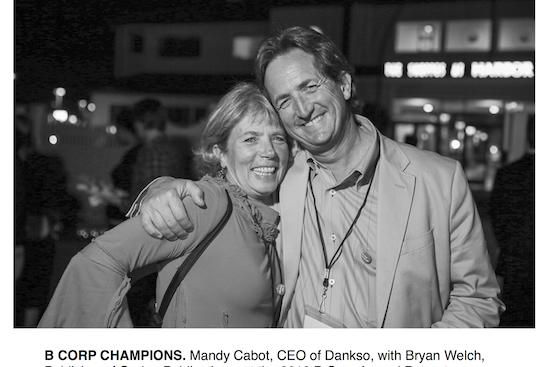
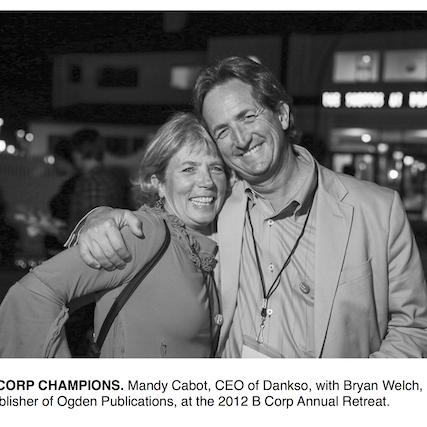
This is the fourth in a weekly series of excerpts from the upcoming book "The B Corp Handbook: How to Use Business as a Force for Good" (Berrett-Koehler, October 13, 2014).
By Ryan Honeyman
More than 1,000 Certified B Corporations from 80 industries and 35 countries — led by well-known icons like Patagonia and Ben & Jerry’s and disruptive upstarts like Warby Parker and Etsy — are leading a global movement to redefine success in business.
One of the most powerful ways to learn about the movement is to hear about the benefits, challenges, and surprises of becoming a Certified B Corporation directly from the B Corp community.
I recently interviewed Mandy Cabot, CEO of Dansko, for my upcoming book "The B Corp Handbook." Dansko is a great example of how using business as a force for good has benefitted their customers, employees, local community, the environment and the company’s bottom line.
Q: What business benefits do you directly attribute to your B Corp certification?
"B Corps love to share. Whether it’s great ideas about marketing, operations, community outreach, or sourcing, or offering discounts to fellow B Corps on goods and services, the community of B Corps generates a tremendous amount of collective goodwill, energy and value."
"B Corp certification has also helped us stay focused on best practices — less operational waste, lower energy usage, a better and more complete employee handbook and sourcing code of ethics, and so on."
"If you really want to tow the triple bottom line, you need to hire an entire team of people to stay on top of everything. The folks at B Lab who give this their undivided attention and who can see the 'all of it' do this for us, coming up with both the standards and easy-to- follow steps for improvement."
In addition, there’s definitely a halo effect that comes with being a B Corp. We get extra media attention, both through collective marketing efforts (often provided at very little cost by B Corps like Ogden Publications), as well as editorial press.
Q: Was it difficult to “sell” B Corp certification internally?
"Selling the B Corp proposition to our internal folks was not difficult. We already had a culture that valued social benefit, employee empowerment and development, community outreach and environmental stewardship. B Corp certification gave us the tools, the language, the standards and the collective voice to stay on mission."
Q: What was your biggest challenge in becoming a B Corp?
"Becoming a B Corp was more difficult than we thought it would be. When we first applied we were four percent employee-owned. We had (what we thought were) very generous employee benefits, extensive volunteer and corporate giving programs, gold LEED certified headquarters, products certified by the American Podiatric Medical Association, and so on. Yet we received only the barest passing grade from B Lab."
"However, this experience has been incredibly valuable for us. The certification process identified gaps in our employee handbook, for example, that we readily adopted but simply hadn’t thought of ourselves -- like a whistle-blower policy or policies allowing time off for voting and jury duty."
Q: What advice do you have for a business that is considering B Corp certification?
"My advice is to start by taking the free and confidential B Impact Assessment, even if you’re unsure about getting certified. It will likely show you things you hadn’t thought of and allow you to compare your results to those of thousands of other companies."
"Also, involve as many people as you can in the process. If you want your values to stay top-of-mind in all your operations, involve every department in the responses. Engage non-managers as well. Give them an opportunity to lead and to offer solutions; turn them into champions and heroes."
For more information on Certified B Corporations, visit bcorporation.net.
Ryan Honeyman is a sustainability consultant, executive coach, keynote speaker, and author of The B Corp Handbook: How to Use Business as a Force for Good. Ryan helps businesses save money, improve employee satisfaction, and increase brand value by helping them maximize the value of their sustainability efforts, including helping companies certify and thrive as B Corps. His clients include Ben & Jerry’s, Klean Kanteen, Nutiva, McEvoy Ranch, Opticos Design, CleanWell, Exygy, and the Filene Research Institute.
To get exclusive updates and free resources sent to your inbox every month, sign up for Ryan's monthly newsletter. You can also visit honeymanconsulting.com or follow Ryan on Twitter: @honeymanconsult.
China Plans World's Largest CO2 Market While U.S. Drags Its Feet


Upon learning today that China has a plan in place for a carbon emissions "cap and trade" market by 2016, my joy was mixed with frustration at U.S. foot-dragging. The D.C. gridlock and politicizing of energy sources like wind and solar -- the politicizing of energy sources -- has consistently ceded manufacturing and renewable energy technological ground to China and Europe for decades. Are we going to let that happen again with carbon markets?
Apparently so.
China aims to finalize its plans for the largest "cap and trade" program in the world by 2016 -- a program that will eclipse the scope of European emissions trading. China's market will be the main trading hub for Asia and the Pacific. It'll place a cap on CO2 emissions from power plants and the nation's many manufacturers. Basically, if an entity wants to emit carbon dioxide above the cap, it needs to buy permits from the market.
China has made a commitment to reduce its greenhouse gas emissions per unit of gross domestic product to about 45 percent of its 2005 emissions -- and by 2020. Mind you, that's no small feat.
While China is relatively low in terms of greenhouse gas emissions per capita, it is by far the largest total emitter of greenhouse gases in the world. It overtook the U.S. in emissions in around 2005 and has grown tremendously since. The nation currently weighs in at producing about 30 percent of the world's greenhouse gases, while the United States comes in at about 15 percent and has remained more or less stable over time, even reducing its greenhouse gas emissions by a little.
But the U.S. shouldn't pat itself on the back too much. We need to remember exactly how China overtook us in greenhouse gas emissions in the first place. We still have some of the highest emissions per capita in the world, and we haven't exactly tightened our belts on consumption. For the past couple of decades we ripped up our own manufacturing capacity and sent it, and the emissions, to China. Here in the U.S., we also had the dubious benefit of going into a Great Recession for several years, which savaged our industrial output and job sector and had the side effect of dropping our emissions.
So here we are ... China is now the largest emitter of CO2, and the U.S. has stabilized its own emissions growth. And yet, China now has a plan to drop its own emissions to almost half of its 2005 output in under six years. Meanwhile back in the states, we're still wrangling, with a straight face, over whether climate change is an actual thing. The most ambitious change in U.S. policy is President Barack Obama's requirement that U.S. power plants reduce their emissions to 30 percent of 2005 levels by 2030. Just power plants. Not manufacturers. A much less ambitious goal.
It's entirely possible that China could once again overtake the U.S. when it comes to greenhouse gases -- but on the opposite end of the spectrum -- in just a few years. It's embarrassing is what it is.
Image credit: futureatlas.com - source
Hawaiian Electric to Retool with Solar, Smart Grid and Energy Storage
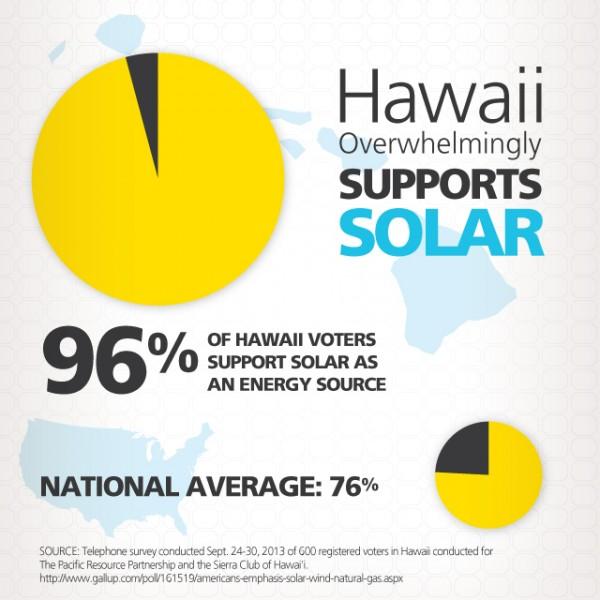

Distributed solar photovoltaic (PV) energy systems, along with smart grid and energy storage capacity, will play a much larger role in Hawaii's energy future if a recently proposed plan comes to fruition.
Pursuing a goal to achieve the highest level of renewable energy use in the U.S., Hawaiian Electric Co. proposes to nearly triple the amount of distributed solar power capacity coursing through its grid by 2030, as well as install smart grid and energy storage systems.
Almost completely reliant on fossil fuel imports for energy generation, electricity costs – as well associated costs in terms of human and environmental health and safety impacts – in Hawaii are roughly twice that of any other U.S. state. That's changing for the better, however, as Hawaiians embrace renewable energy technology, enhance energy efficiency and try to dial down energy usage.
Hawaiian Electric's plan sets a goal of sourcing 65 percent of electricity supply from renewable sources by 2030. Realizing this goal would drastically reduce Hawaii's dependence on fossil fuel imports, greenhouse gas emissions and other pollution associated with fossil fuel use. In addition, Hawaiian Electric expects customers' electric bills would be reduced by 20 percent.
At the forefront of clean energy change
The number of solar PV systems installed in Hawaii grew 40 percent in 2013-- despite issues with interconnecting residential PV systems with Hawaiian Electric grids slowing down the pace of adoption. A total of 17,609 solar PV systems were installed in Hawaii last year with a total generating capacity of 129 megawatts (MW).
Distributed solar power generation capacity is expected to triple as a result of Hawaiian Electric's proposed plan. State-of-the-art electric systems on Oahu, in Maui County and on Hawaii Island are to serve as the foundation of the utility's renewable energy, smart grid and energy storage initiatives.
Complimenting the growing integration of distributed solar and energy storage systems, Hawaiian Electric also plans to install complete smart grid systems in Maui County and on Hawaii Island by year-end 2017 and on Oahu by year-end 2018.
That's going to give customers the flexibility to manage their own energy use, as well as enhance grid reliability and facilitate the integration of renewable electricity supply, highlighted Shelee Kimura, vice president of corporate planning and business development for Hawaiian Electric:
“Our energy environment is changing rapidly and we must change with it to meet our customers’ evolving needs. These plans are about delivering services that our customers value. That means lower costs, better protection of our environment, and more options to lower their energy costs, including rooftop solar.”
Adding energy storage capacity is another core aspect of Hawaiian Electric's ambitious strategic plan. As the utility explains in a press release:
“Energy storage systems, including batteries, will increase the ability to add renewables by addressing potential disruptions on electric grids caused by variable solar and wind power. Hawaiian Electric is evaluating proposals for energy storage projects on Oahu to be in service by early 2017. Energy storage projects are also in the works for Maui, Molokai, Lanai and Hawaii Island."
*Image credits: 1) RevoluSun; 2) SEIA (Solar Energy Industries Association); 3) Pacific Resource Partnership, Sierra Club of Hawaii
Making the Case for Nonprofits in Microfinance
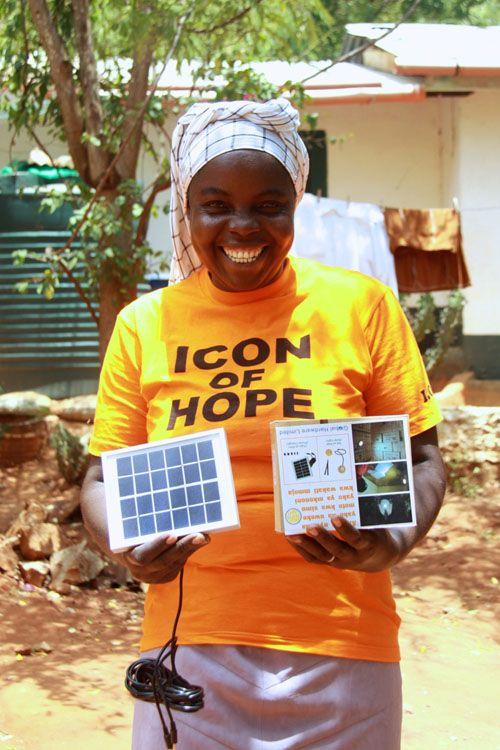

By Jennifer Gurecki
Risk-taking and experimentation are not necessarily terms synonymous with the nonprofit sector. In fact, we normally look toward for-profit entities to take the lead on innovating systems and products, but in the case of financial inclusion for the poor, perhaps it is time to revisit the role of nonprofits. Dean Karlan, in the Fall 2014 issue of the Stanford Social Innovation Review, does just this, illuminating three important functions that nonprofits can serve in the ever-evolving sector of microfinance: serving the unprofitable, building trust and promoting innovation.
At Zawadisha, we are quite familiar with working with people who have been considered too poor and too rural. We have dedicated more time to building relationships with these individuals than we have with developing policies and protocols that inhibit experimentation. We have gained valuable insight from these individuals, resulting in the quick implementation of new products and services that truly meet people’s needs. We have been able to accomplish all of this precisely because we are not a financial institution. We are not bound by top-heavy policies and red-tape that slows down processes and places a heavy emphasis profitability. In this way, we have benefitted from our nonprofit status, allowing us to test different methods of financial inclusion while still working toward achieving a triple-bottom-line approach to poverty reduction.
Microfinance has reached a stage in its lifecycle where it has become more stable as a financial inclusion tool, but with that stability can come stagnation. We believe that there are elements of the sector to be challenged (such as collateral) and new services to be launched (such as eco-loans targeting consumers rather than micro-loans targeting entrepreneurs). As a growing organization, the key to Zawadisha’s development has been creating a culture of inquiry and discovery. We learn by engaging in meaningful dialogue with the women we serve, by carefully observing, and by seeking out current research on the sector. Unlocking this information, implementing the findings and sharing it with others is critically important as we work towards financial inclusion that is pro-poor and pro-woman.
That is why one of our initiatives is a two-week immersion in Kenya for students to learn from and engage in our approach to community-based micro-lending. More than a volunteer abroad experience, their time spent in the field, interacting with our members, collecting and interpreting data, and pairing both with rigorous scholarly inquiry creates a unique learning opportunity that cannot be found in a textbook.
In January 2015, Zawadisha will host a group of Presidio Graduate School students, who are launching an Indiegogo crowdfunding campaign during the month of September to raise money for their trip to Kenya with Zawadisha. Learn more about their trip here and Zawadisha at Zawadisha.org.
Photo provided by Zawadisha
Jennifer Gurecki is the Chief Innovation Officer of Zawadisha, a non-profit social enterprise that provides micro-loans and training for women in Kenya, with a focus on sustainability and resiliency. She also is a PhD student at Prescott College, studying sustainability education.
Green Beams for the Blue Revolution: How Standards Can Benefit Aquaculture
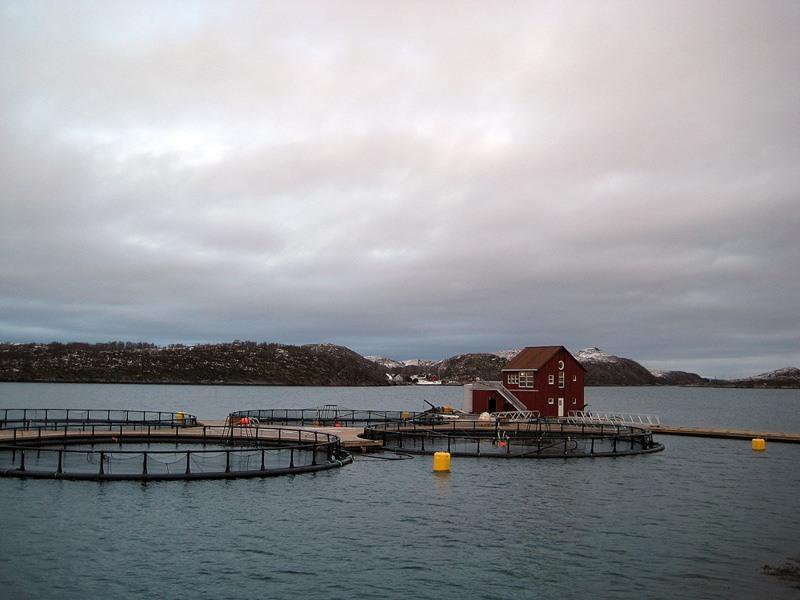

By Erik Bonsaksen
When world fisheries catches declined in the late 1980s, it was explained by the combination of overfishing, size of resource base and changes in ocean climate. At the same time, global aquaculture production began to blossom, expanding by 12 times and becoming today the fastest-growing food production industry on the planet, a development famously coined the "Blue Revolution."
Aquaculture became a promising field in terms of countering food production challenges for the U.N.-estimated world population of 9.3 billion by 2050. However, as the World Wildlife Fund and the Millennium Ecosystem Assessment suggest, human consumption patterns are already now approaching the upper limit of what Earth’s resources can sustain with signs of depletion on nearly two-thirds of the planet’s natural resources. To evade a global food supply crisis, an increased level of sustainable management is required as further exhaustion of natural fish populations and surrounding environment can be fatal for the upcoming demand.
How 'green' products can improve the industry
Key factors for sustainable management in aquaculture are technological advancement and policies that encourage environmental standards and labels. A 'standard' is a solution sprung from repeated use in a certain period of time and numbers. It can form a narrative about the ways we order ourselves, or other people, things, processes, numbers and even language itself for the optimum degree of order. When embodied in a document, a standard can have a 'soft law' nature, but it really is just an unforced and preferred method of doing things in the world we live in.
These standards can, when containing a set of environmental requirements, uphold eco-labels – identifiers on products for being more environmental friendly than other products. Such 'green products' will surely not solve the global food supply threats alone. But instead of waiting for the magic technological advancement to solve all problems, they can promote the incorporation of key principles for energy efficiency or waste management, thus enhance or improve the overall 'standard' of the aquaculture industry.
A label can become a respected indicator for responsible practice, but it relies on the level of the requirements, third-party verification and acknowledgement. 'Going green' seems to be like a bandwagon that every company tried to jump on to, exploiting the use of green and ecological products as a catchpenny gimmick. As a result, a green wave has flooded the banks of aquaculture, leading to a great proliferation of environmental standards and certification schemes, and greenwashing – false or misleading claims about a product, service or company, continues to be a challenge for people trying to buy greener fish products.
Make environmental awareness simple and easy
Recent marketing and retail studies show that price and expertise are the main barriers towards green behavior and consumption, and the latter is interestingly affecting the former. Who is to blame? Time required getting into the various topics such as eutrophication or coal ash disposal is far beyond the willingness to spend among the average consumer. Navigation through the vast sea of environmentally friendly fish products can be difficult, and consumers will ideally make their selection based on confidence and trust. Instead of having thousands of labels to choose from, few but credible schemes should prevail.
What the aquaculture industry can do is to convince the customer in an easy and direct manner. A standard procedure is to validate beyond claims and confirm the compliance of strong and international environmental requirements. For this, there are few standards and labels showing promise. The following is a list of examples of environmental labels that help consumers to identify greener and healthier fish products:
- Aquaculture Stewardship Council (ASC): Recognize aquaculture products that have been harvested in a more sustainable manner based on certification to the ASC Salmon standard.
- Best Aquaculture Practices standards (BAP): A certification scheme advancing environmentally and socially responsible aquaculture.
- Naturland: Promotes organic aquaculture through sustainable management, nature conservation and climate protection in actual practice, preserving and maintaining the soil, air and water, as well as consumer protection.
It is also a question of getting people to buy green products. When recession gripped the world in 2008, the environmental love affair steadily built up throughout decades seemed to burst like an old-timey firecracker. In a sudden shift, worldwide markets experienced a transition in consumer patterns from explicit picking of sustainable products, to an impassive selection reserved to those only found in sale baskets.
For a brief moment, that is. It is easy to think the green trail before sauntered was a quaint gust with a long lost peak, but problems do not cease to exist despite being less trendy. With time, awareness of environmental challenges will increase as the consequences continue to brawl. Major industries, such as aquaculture, have responded by forming initiatives to ensure sustainability. Because not being a part of the nature-friendly train might in the long-term sidetrack a company away from future markets.
Hence, if global fish populations continue diminishing, there will indeed be a hard market to get into.
Image credit: Thomas Bjørkan, wikimedia
As a keen lover of the environment and seafood, Erik Bonsaksen finished a unique degree in Industrial Ecology focusing on aquaculture, management and certification/standards. His professional motto is "do more with less", the very core of sustainable development.
Beijing Recycling Program Turns Bottles Into Subway Rides


Forget your reusable bottle at home this morning and find yourself towing an unwanted plastic bottle? If you are in Beijing, you are in luck -- you could trade in that empty bottle for a subway ticket.
“Reverse vending machines” in subway stations around the city allow riders to deposit polyethylene terephthalate (PET) plastic bottles in exchange for a commuter pass or mobile phone credit. Donors receive 5 fen to 1 yuan (about 16 cents) for each PET bottle, depending on its weight and composition. Incom Recycling, which is owned by Asia’s largest PET processor, Incom Resources Recovery, first introduced the system to Beijing subway stops in late 2012, with 10 machines across the city. The company has since expanded to include 34 machines, and it plans to install as many as 3,000 across the city, according to local media reports.
The machines would seem like a great way to encourage recycling in a city of upwards of 20 million. Except that Beijing doesn’t have a plastics recycling problem -- it already has a 90 percent recycling rate for PET bottles, above most cities around the world. This is not because recycling is a regular behavior in Beijing (or the rest of China), but because there are countless migrant workers who pick through the city’s waste and collect plastic bottles, which are then processed and repurposed by large companies like Incom, or at one of thousands of small recycling workshops.
Incom intends to use the machines to bypass informal collectors and earn additional revenue from the machines in the form of advertisements, according to a 2012 story by the Guardian. As Shanghai-based author and Bloomberg columnist Adam Minter has remarked, in contrast to the West, recycling is more of an economic activity than an environmental pursuit in China.
The United States is the largest generator of recyclable waste, producing about 130 million tons each year. About 40 percent of that is shipped to China and other countries for processing into raw materials.
Image credit: Incom Recycle
APP will meet pulp targets, say independent experts


An independent study has confirmed that Asia Pulp and Paper Group (APP) has sufficient plantation resource to meet the pulp requirements of its existing mills as well as its future mill in OKI, South Sumatra.
The launch of the company’s Forest Conservation Policy (FCP) last year was met with caution by certain NGOs when APP committed to producing pulp and paper that is free from fibre or activity linked to deforestation.
To address concerns around whether existing supplier plantations would have sufficient capacity to meet APP’s commitment, The Forest Trust (TFT) and Ata Marie, a provider of professional services to the Forestry, Agri-Business and Natural Resource Management sectors, were asked to conduct an independent “Growth and Yield” study to assess existing plantation areas.
Scott Poynton, executive director, The Forest Trust, said: “We are pleased to be able to reassure everyone that APP and its suppliers have sufficient resource for the company’s 100 per cent plantation target. We have identified one minor gap in 2020 but this can be easily filled by increasing the productivity of the plantation operations between now and then.”
Aida Greenbury, APP’s managing director of sustainability, commented: “The FCP is central to our business model and this study proves that the model works - we can continue our operations and expand profitably without having a detrimental impact on forests in Indonesia or anywhere else in the world.
“The TFT report forecasts a minor gap in supply in 2020. However it is clear that with a harvesting rotation of around five years, improvements made now can bridge that gap by increasing productivity of supplier plantations through improved yield, better tree stock and reduction of waste.
“As such, we have been developing an action plan to ensure we have sufficient plantation fibre to meet the pulp requirements of our existing mills as well as our future mill in South Sumatra, in line with our target to become a 100% plantation business for pulp production.”
The methodology and conclusions of the report will be evaluated by Rainforest Alliance as part of the independent FCP evaluation it is currently carrying out.
For more details, download APP’s 18 month FCP update report here
Picture caption: Timber from APP's sustainable plantations is checked as it enters the mill log yard
Japan to set up sports corruption unit for Tokyo 2020 Olympics


The Japanese government has announced plans to set up a special policing unit to monitor and investigate corruption threats to the nation’s sporting bodies.
Government officials say that multiple government agencies would co-operate with the special unit in order to fight sports corruption in Japan and potential threats from abroad ahead of the Tokyo 2020 Olympics.
The next games will be Japan’s fourth Olympic event, following on from: the 1964 Summer Olympics in Tokyo; the 1972 Winter Olympics in Sapporo; and the 1998 Winter Olympics in Nagano.
Japan’s ruling party the Liberal Democratic Party stated that plans for the creation of the special unit had begun in December 2013.
The government plans to ask for international co-operation in fighting sports corruption, stating it had reviewed international legal systems regarding the matter. Concerns about sports corruption have grown in recent years, due to corruption in Sumo.
Japan’s ancient and revered sport of Sumo has fallen on hard times. Damaging scandals over the past five years have led to declining popularity and eroded the sport’s finances. Match fixing, betting, drug use, extortion, the brutal treatment of young wrestlers, and links with organised crime have all provoked public outcries.
Advertisers and sponsors have withdrawn their support as it has become clear that large numbers of Sumo wrestlers and others associated with the sport are involved in the corruption.
Sumo’s status as a cultural emblem of many historic Japanese traditions has become severely tarnished. Consequently, ticket sales for wrestling matches and TV viewership have declined, worsening the sport’s problems. Most worrying of all is the inability of the sport to put its house in order.
The government stated that the special unit would focus mainly on detection of match fixing, tampered sports performance, and money laundering through sports betting.
Corruption in Japan has increased since 2011, when the Tohoku earthquake and an accompanying Tsunami devastated coastal regions of North East Japan.
This record earthquake led to the nation’s most extensive reconstruction efforts since 1945.
The devastation has proved a bonanza for the Yakuza, Japan’s organised crime groups, who have strong links with the construction industry, partly through their control of the supply of labourers.
In 2011, Japan’s ranking out of 178 nations in Transparency International’s corruption perception index was 14 - just behind Germany. However, in 2013, Japan was 18th, behind Barbados and Hong Kong.